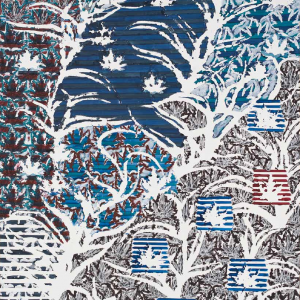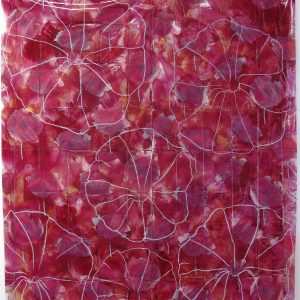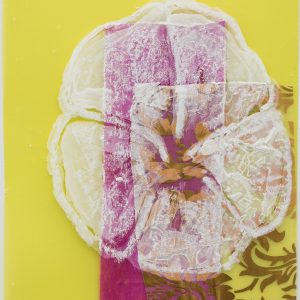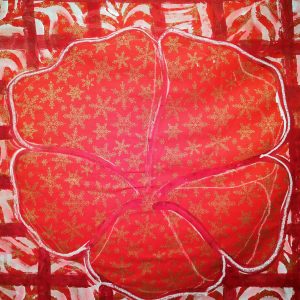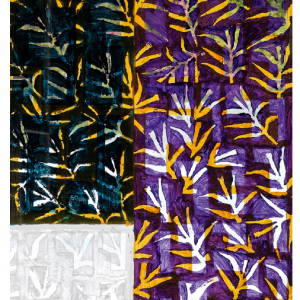Jean-Michel Meurice
Jean-Michel Meurice (Lille, 1938 – Paris, 2022).
A student at the École des Beaux-Arts in Tournai, his youth was marked by a dual passion for painting and cinema. In 1960, while serving in the army in Algeria, he produced one of his first works that brought his two passions together: a three-hundred-metre-long painted film whose motif is composed solely of the repetitive traces of fingers and brushes; projected onto a screen, it is transformed into a moving painting lasting ten minutes. Since then he has pursued a dual career as a painter and film-maker.
In 1963 he made his first trip to the United States, where he discovered painting that was free of codes, the abstraction of Ad Reinhardt and the dripping and all-over processes that had made Pollock famous.
He painted repetitive shapes (stripes or dots) on large formats, using spray cans or sponges. The traditional canvas was often replaced by plastic sheeting or other unusual supports. In 1966 he exhibited at Jean Fournier’s in Paris with Hantaï, Degottex, Buraglio, Parmentier and Rouan, and was one of the co-founders of the Support/Surface movement.
Alongside his work as a painter, he has been involved in a number of audiovisual projects since 1960. He began his work as a film-maker with a series of portraits of artists (Bram Van Velde, Sonia Delaunay, Alberto Burri, etc.), making 13 short films on art. His documentary films, which have already won 7 d’Or awards, were awarded the Grand Prix National de la Création Audiovisuelle in 1992 and the Grand Prix de la SCAM in 2010.
He has also had a major career in television, being one of the personalities behind the creation of the Franco-German television channel ARTE, of which he was director from 1986 to 1989.
Four of his “Pénélopes” are in the collections of the Centre Georges Pompidou, and he designed the ceiling at the Musée Picasso in Antibes. He was awarded the Grand Prix National in 1992 for his body of work. His work has been exhibited all over the world (Centre National des Arts Plastiques Paris, Musée d’Art moderne de Saint-Étienne, Musée Fabre, Fondation Maeght, Musée des Beaux-Arts de Lille, Hermitage Museum, Galerie Nationale du Jeu de Paume, Rio de Janeiro Museum, Madrid Museum of Contemporary Art, Tokyo Museum of Contemporary Art, etc.).


